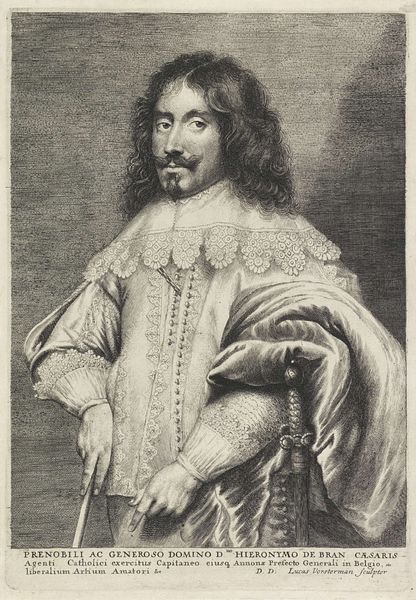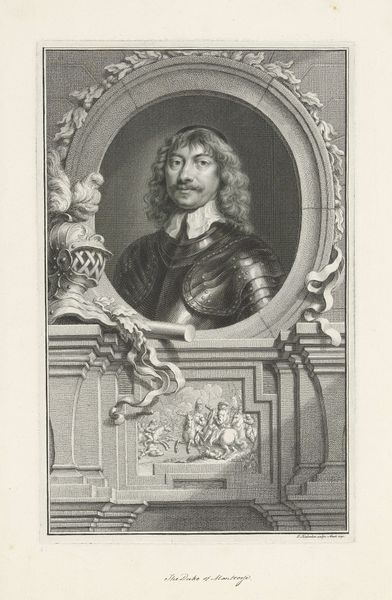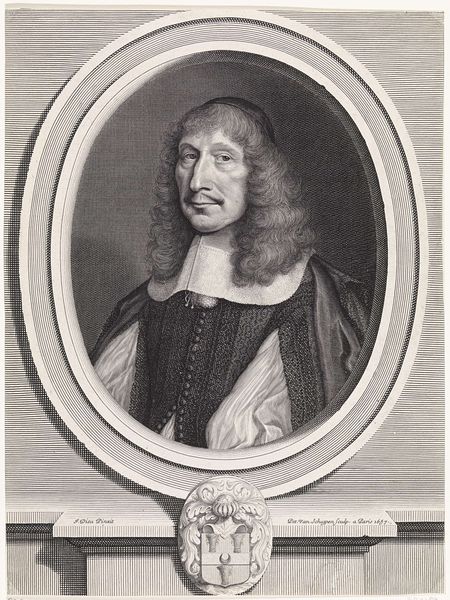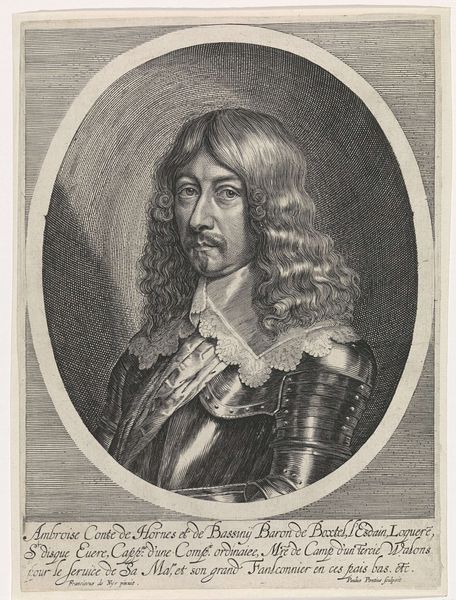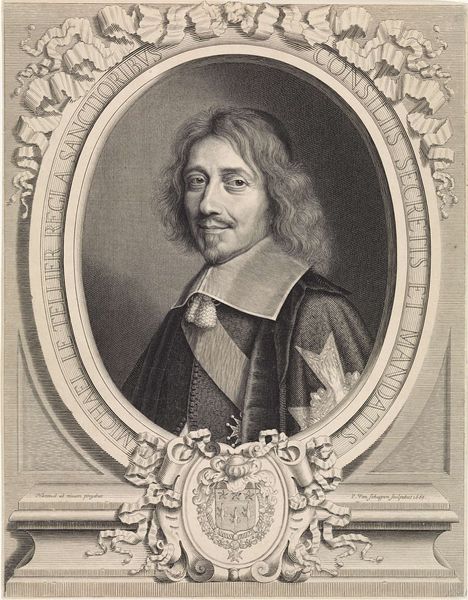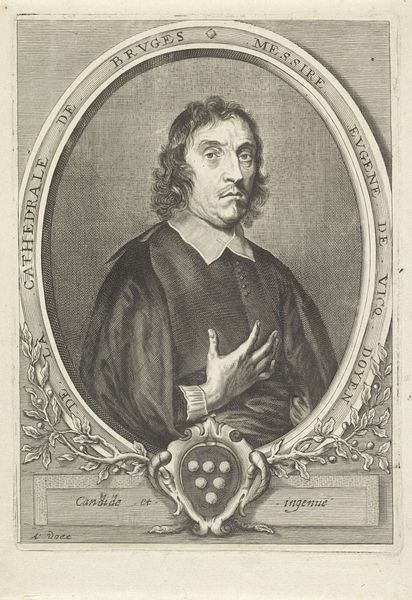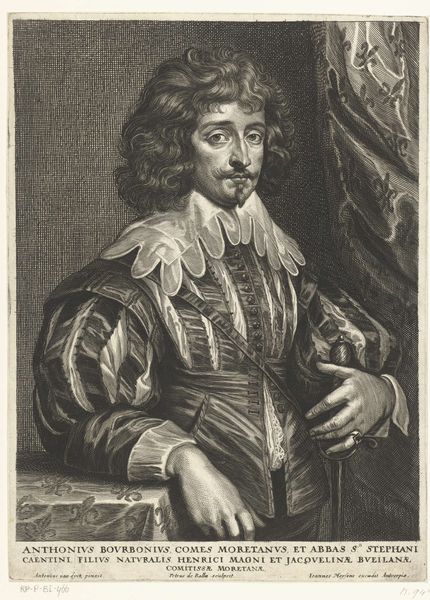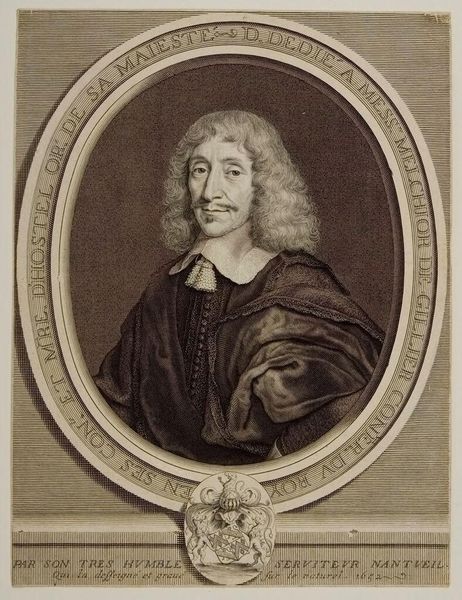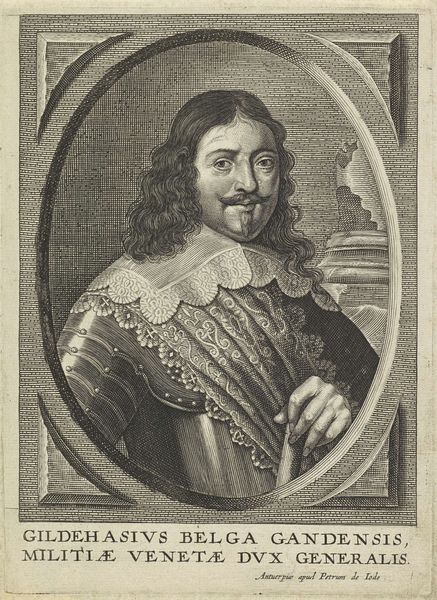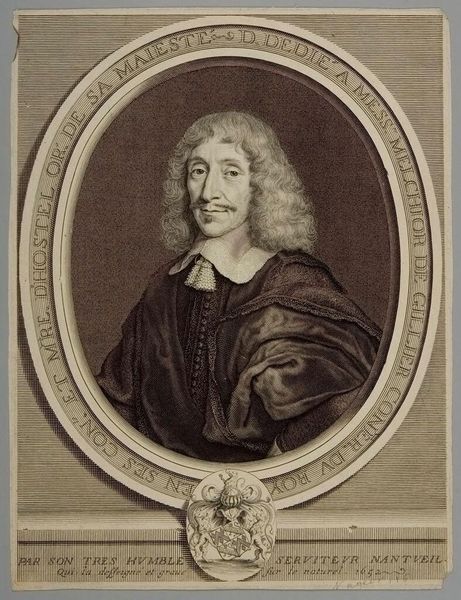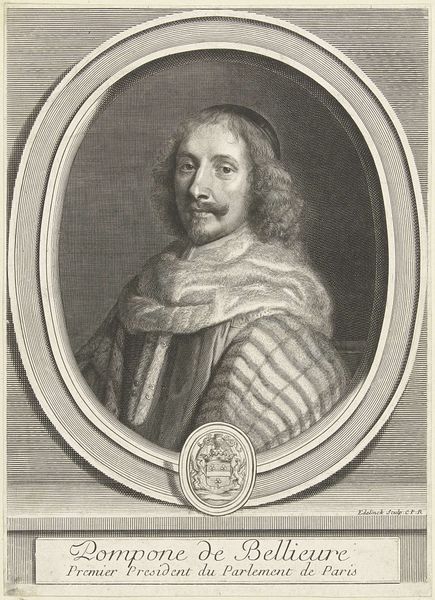
print, engraving
#
portrait
#
baroque
#
dutch-golden-age
# print
#
engraving
Dimensions: height 309 mm, width 221 mm
Copyright: Rijks Museum: Open Domain
Curator: Welcome to the Rijksmuseum. Here we have a portrait, dating from the 1640s, of Cornelis van Haesdonck, a merchant. It's a print—specifically an engraving—by Salomon Savery. Editor: My first thought? This guy has seen things. It's there in his eyes and mouth, which somehow doesn't ruin that incredible velvet jacket and the cascade of hair, of course. Curator: Indeed. Savery was working at a fascinating period in Dutch history. The Dutch Golden Age was really defined by portraiture—it was as much about capturing a likeness as it was about representing social status. This piece speaks to that, especially when we consider the context of this print being more widely disseminated than an oil painting. Editor: It is striking how such detail is possible in this medium. I wonder about the way artists then approached depicting clothing textures. I like to think they'd have something tactile like velvet on hand to check for accuracy. You get this real sense that Van Haesdonck knew his worth too—a calm almost wry acknowledgement of himself. Curator: Prints also served an important memorial function. Look to the inscription at the base—it tells us something about him and his character beyond simply presenting his face. Consider how these visual strategies of both realism and idealization worked together. How was someone immortalized, and to what end? Editor: The positioning with one hand gently over the book, the coat of arms lurking just behind the sitter's left shoulder like a good idea... it's very staged but subtly so. The Dutch were masters of making serious commercial art feel fresh. You can tell this portrait was made for its audience in terms of what it's projecting. Curator: Absolutely. He wants us to perceive him a certain way. Portraits like these were key to shaping individual and collective identities in the burgeoning Republic. An engraving made the man far more publicly visible. Editor: Well, looking at the engraving as a whole has been truly illuminating; I appreciate this portrait and its presentation even more than when I walked up to it. Curator: And hopefully, by understanding this portrait within its historical and cultural context, our visitors have gained some further insight into not just the man, but Dutch society itself.
Comments
No comments
Be the first to comment and join the conversation on the ultimate creative platform.
